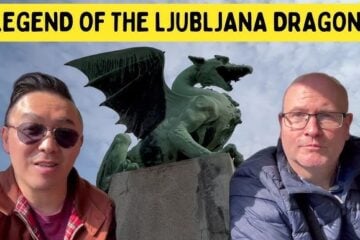The Sandman season 2 out now!

The Sandman television series, based on the acclaimed comic book by Neil Gaiman, blends myth, fantasy, and philosophical exploration into an intricate narrative about dreams, gods, and the nature of reality. Season 1 introduced audiences to Morpheus, the Greek God of Dreams, and his realm, The Dreaming. Season 2 expands this universe further, adapting more stories from the Sandman graphic novels and continuing the journey through mythologies—particularly Greek mythology.
Greek myths are central to the narrative threads of The Sandman, not just as reference points but as living presences within its world. Gods, demigods, and mythological themes are treated with the same weight as biblical or folkloric figures. Season 2 deepens these connections, especially as it adapts key arcs like “Season of Mists”, “A Game of You”, and parts of “Brief Lives”, all of which feature mythological echoes and characters rooted in or resembling figures from Greek antiquity.
Greek Mythology in The Sandman Universe
Before diving into Season 2 specifically, it’s important to understand Neil Gaiman’s approach to mythology. Gaiman treats myths as persistent, evolving truths—stories that gain power from belief and shape reality in The Sandman’s cosmology. Greek mythology is particularly resonant because it explores timeless themes of hubris, fate, love, and transformation. These themes mirror Dream’s personal journey and the dilemmas of those who live in—or flee from—their archetypal roles.
In The Sandman, mythological figures are not static. Gods grow weary, take on new shapes, or fade as their relevance wanes. Much like the Greek pantheon, which was deeply human in its passions and flaws, the Endless (Dream, Death, Desire, Despair, Delirium, Destruction, and Destiny) personify universal forces but exhibit very human behavior.
The Sandman Season 2 Overview and Greek Mythological Themes
Season 2 of The Sandman adapts major arcs from Gaiman’s comic series, including:
- Season of Mists – Dream journeys to Hades to rescue a soul and finds Lucifer has abdicated the throne. A pantheon of gods and mythological beings—including Norse, Egyptian, and Japanese deities—appear to claim Hell for themselves.
- A Game of You – A standalone, dreamlike adventure about identity, belief, and fantasy, with subtle references to classical mythological archetypes.
- Brief Lives – Dream and his sister Delirium search for their missing brother Destruction, engaging with immortals and gods in the process.
In all three arcs, Greek mythology features either directly through characters or thematically through concepts like fate, the underworld, hubris, and transformation.
The Underworld and Hades in “Season of Mists”
Perhaps the most explicit connection to Greek mythology comes through Season of Mists, in which Dream returns to Hell to free the soul of Nada, a mortal woman he once loved and condemned. This act draws clear parallels to the myth of Orpheus and Eurydice, as well as the descent myths of Heracles and Persephone.
- Orpheus and Eurydice Parallels: Dream’s descent into Hell mirrors Orpheus’s attempt to retrieve Eurydice. Both narratives involve a male protagonist entering the realm of the dead to rescue a loved one. In Gaiman’s mythos, Dream is also literally Orpheus’s father (Orpheus appears in Brief Lives), further cementing the thematic connection.
- Hades and Persephone: In the comics and show, Lucifer Morningstar rules over Hell much like Hades rules the Greek underworld. But unlike Hades, who remains, Lucifer renounces his role—creating a power vacuum. The idea of gods resigning their posts is rare in Greek myth but appears in stories like Kronos’s fall and Hestia ceding her throne to Dionysus. Gaiman twists the myth by making Lucifer weary of his role, much like Greek gods who suffer under the weight of eternal responsibility.
- The Soul and Judgment: In classical Greek myth, souls journey to Hades and are judged. In Season of Mists, different pantheons argue for control over the souls in Hell, showing a multiverse of afterlives. The Greek mythological idea of Tartarus (eternal punishment) vs. Elysium (blessed rest) resonates here, particularly in Dream’s anguish over his past judgment of Nada.
Destiny, the Fates, and the Moirai
Destiny of the Endless, who appears prominently in Season of Mists and Brief Lives, is modeled on the concept of fate from Greek mythology—especially the Moirai, or the Fates: Clotho, Lachesis, and Atropos. These three figures spin, measure, and cut the thread of life, determining a person’s destiny.
- The Greek Fates are echoed directly in The Sandman as “The Three,” also known as the Hecateae or the Kindly Ones (depending on the context). They appear throughout the series in different guises—sometimes as witches, sometimes as crones—offering cryptic guidance. Gaiman draws from the classical idea that fate is inescapable and above even the gods.
- In Season 2, these triple goddesses serve as a reminder that even beings like Dream and Lucifer cannot escape destiny. When Dream returns to Hell, he’s fulfilling a prophecy and a role long foreseen. The Moirai’s influence looms large.
Hubris and the Fall of Lucifer
Lucifer’s resignation in Season 2—leaving Hell and handing the key to Dream—is a narrative of hubris. In Greek myth, hubris (excessive pride or defiance of the gods) often leads to downfall: think of figures like Prometheus, Icarus, or Niobe.
- Lucifer’s Hubris: His rejection of God’s authority, his pride in ruling Hell, and his final rejection of that burden mirror Prometheus’s defiance of Zeus and subsequent punishment. In The Sandman, however, Lucifer’s fall continues with a twist—he chooses exile not out of defeat but out of weariness, challenging the very nature of divine punishment and reward.
- Prometheus Parallel: Later in the series (and hinted at in Season 2), Destruction’s withdrawal from his role among the Endless evokes Prometheus too—an immortal who defies his assigned role for the sake of humanity and peace.
Dream, Orpheus, and the Myth of the Dismembered Poet
The Orpheus myth, one of the most direct Greek connections, is interwoven throughout The Sandman, culminating in Brief Lives but foreshadowed in Season 2. Orpheus, the poet who could charm even Hades, is the son of Morpheus and the muse Calliope (a story shown in Season 1’s bonus episode “Calliope”).
- In Greek myth, Orpheus is torn apart by Maenads after he rejects the gods. In The Sandman, his dismemberment comes after a long life of sorrow. Dream, unable to save his son, is haunted by guilt—again, evoking the complex, often tragic relationships between gods and mortals in Greek myth.
- Calliope, the Muse of Epic Poetry: Her appearance as Orpheus’s mother reinforces the connection to classical mythology. She is one of the nine Muses of Greek tradition, all of whom represent different arts and sciences. Her suffering in Season 1 and her resilience hint at the role of inspiration and tragedy in myth and storytelling.
Mythic Structure and Archetypes in The Sandman Season 2
Beyond specific characters, The Sandman Season 2 embraces the structure of Greek myth. Joseph Campbell’s “hero’s journey,” which draws heavily from Greek epic tradition, is reflected in Dream’s character arc. He descends into Hell (the katabasis), confronts gods, reconciles with past mistakes, and changes.
- Katabasis and Apotheosis: Like Odysseus, Heracles, or Orpheus, Dream’s journey is one of descent and return. Each episode in Season 2 builds upon the mythic motif of facing internal and external trials to achieve transformation.
- Tragic Hero: Dream is also a tragic hero in the Greek sense—powerful, noble, but flawed. His rigidity, pride, and obsession with order mirror Greek figures like Oedipus or Agamemnon, whose greatness is undermined by personal failings.
The Sandman: Living Myths in Modern Form
Season 2 of The Sandman cements the show’s role as a modern mythmaker, standing on the shoulders of classical tradition—especially Greek mythology. From the descent into Hell to the dismembered poet, the abandoned throne, and the eternal Fates, the show weaves Greek myth into its cosmic tapestry.
What makes The Sandman unique is not merely its references to Greek mythology but its integration of those myths as living, breathing realities. Gods walk among men, not as relics of the past but as forces shaping the present. Just as the Greek myths once served to explain the human condition, The Sandman continues that tradition—using old stories to ask new questions about identity, change, power, and mortality.
In this way, The Sandman becomes a myth of its own—an epic for our age, echoing the timeless voices of Homer, Euripides, and Hesiod, yet speaking in a voice unmistakably modern. And as long as we dream, these myths—old and new—will continue to shape our understanding of ourselves and the worlds we build.
Discover more from Hellenic Moon
Subscribe to get the latest posts sent to your email.


